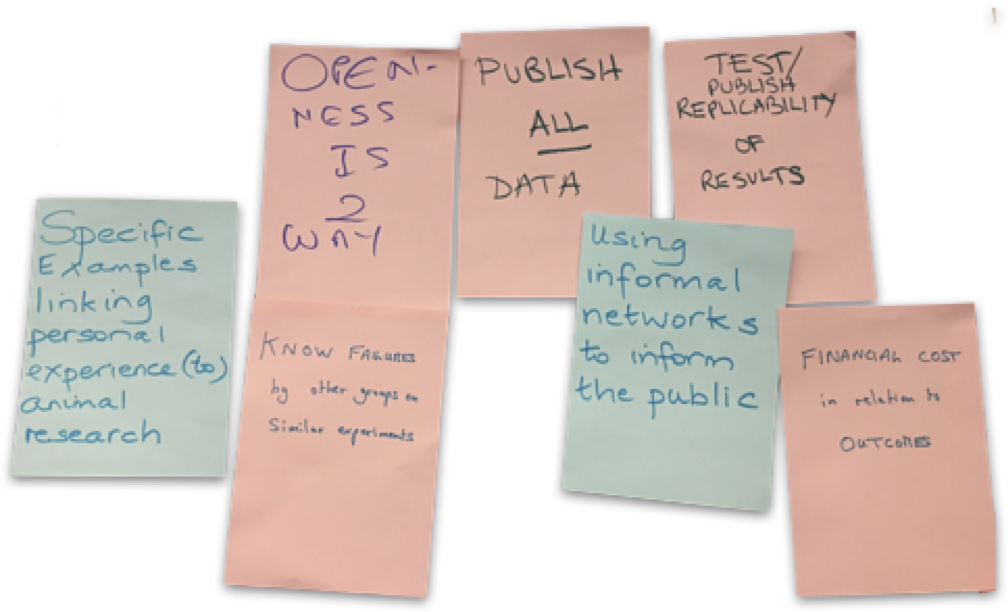Being open about openness
Being open about openness
The concept of openness is increasingly being used to drive change and shape debates around animal research. However, it is a complicated and nuanced concept, which can be both uniting and dividing in practice. As research becomes more open, what is excluded can become clearer. As openness becomes an accepted norm, previously successful communications can seem tokenistic. Conversely, details formerly dismissed as irreverent or emotive may find deep connection with members of the public.
We are using the skills, knowledge, and methods of the social sciences to explore how openings around animal research can further communication and shared understanding across the animal research nexus. We are interested in the openness of openness, as a process that can never be complete, and with different perspectives about where these limits lie. One part of this exploration is understanding how members of the public define openness, what it looks and feels like to them.
Gail, Rich, and Bentley ran a workshop with members of Exeter University of the Third Age in May 2018 on “What does openness in animal research mean to you?” The workshop began with a presentation from Gail introducing the Concordat on Openness in Animal Research, explaining its commitments, and the different institutional, activist, public and patient exceptions around openness. Rich provided a taste of new public and patient activities, featuring facility tours and open days, and images from the 360° digital lab tours.
For the final section of the workshop, Bentley asked attendees to collectively answer the question “How can we improve openness around animal research?” Participants put forward ideas through facilitated discussions. We collectively reviewed these ideas and clustered them into six emerging themes. We then named each cluster with an action.
The group suggested that openness in animal research could be improved by:
- Acknowledging the range of emotions
- Justifying the choices made by scientists
- Providing clear and accurate communication
- Acknowledging negative and difficult issues
- Proving information about specific benefits
- Allowing the 2-way flow of information to and from different people
The full outputs from the workshop have been collated into a short report which you can down here.
The report has a broad range of ideas. Some proposals are currently available, some are under development, and some are not. For instance, “What species are being used other than mice” can be answered from information provided by institutions or the Home Office statistics. Other information is not collected, so new communication routes would be required to match what people want from openness to those who might provide it. Workshop participants also wanted communication to be relevant to their personal experiences and supportive of peer-to-peer and two-way dialogue, suggesting “specific examples linking personal experience (to) animal research” and “using informal networks to inform the public”.

The U3A write a short report on all their events. The subsequent write up (scroll down here) raises interesting points for us and all efforts at openness. The U3A representative reports the group were “fully engaged” with the process and although we had been “extended a considerable degree of ‘openness’” there was not enough discussion of harm or suffering or alternatives, which they personally felt were “important aspects of openness”.

Discussion about harms did come up in the full range of contributions from other U3A members, who talked about the lived experience of animals and the need to explore alternatives, which you can read in the report. And we should emphasise our work on the Animal Research Nexus is not seeking to ‘minimise negative perceptions of research involving animals’, rather to enquire around what people expect openness to achieve, alongside other changes in science and society. However, it does underline how complex openness is to achieve, and that for many people openness involves both information about what is happening to animals and also recognition of what is being experienced by them.
We are very grateful to the U3A for their energy and efforts on the day and for the feedback. Exploring the opinions, perceptions, and expectations of people will push us to develop new methods and spaces for communicating and collaborating and we are excited for the challenge.